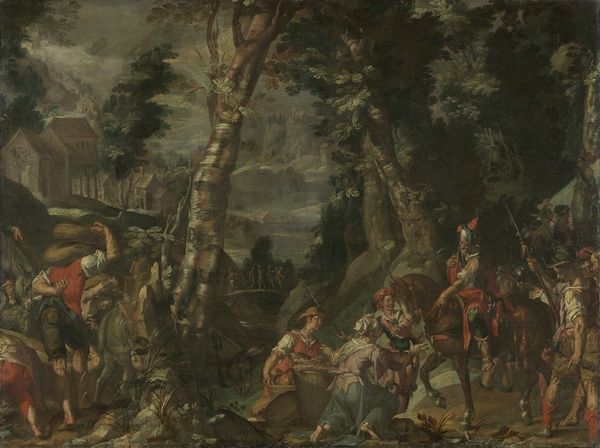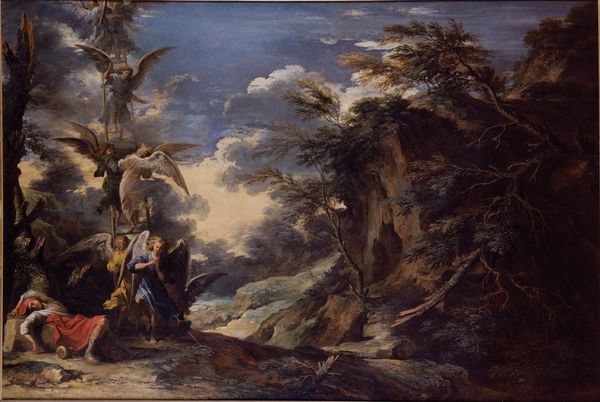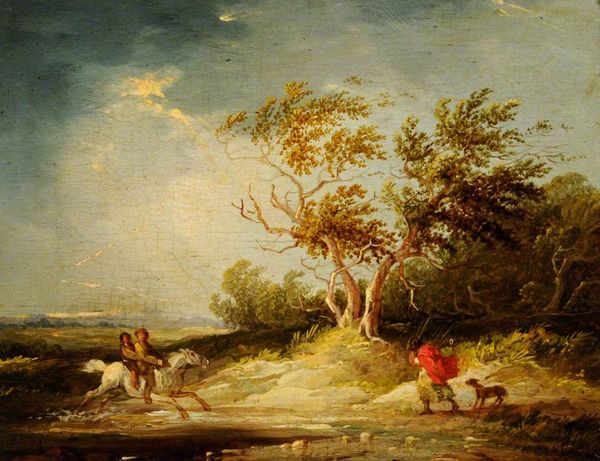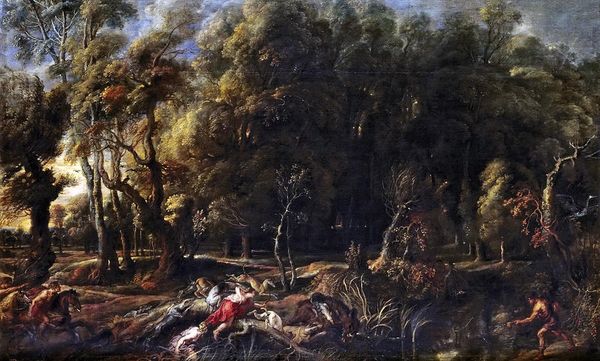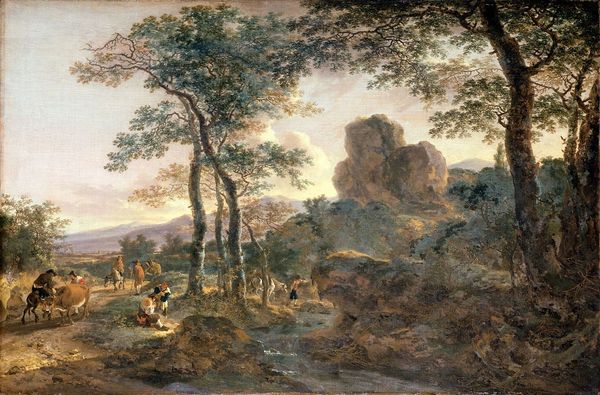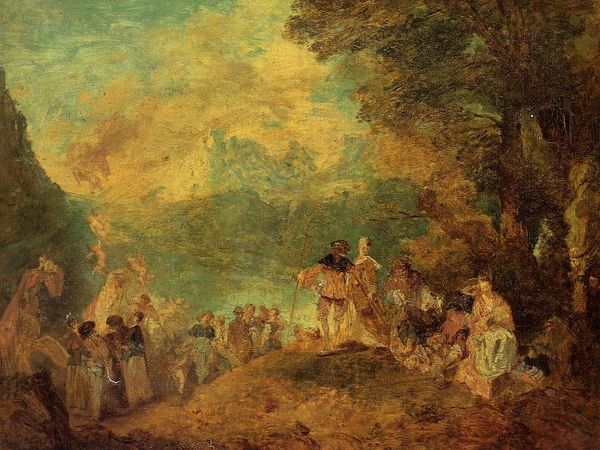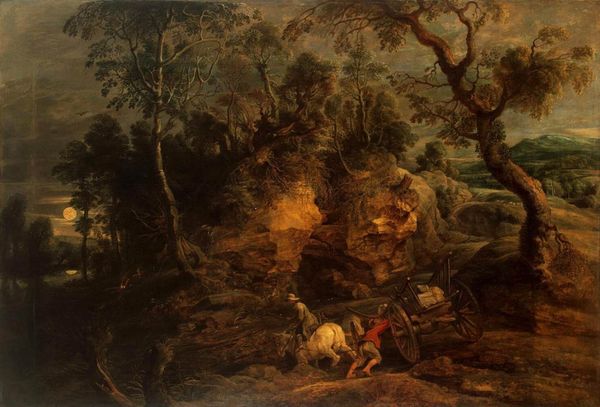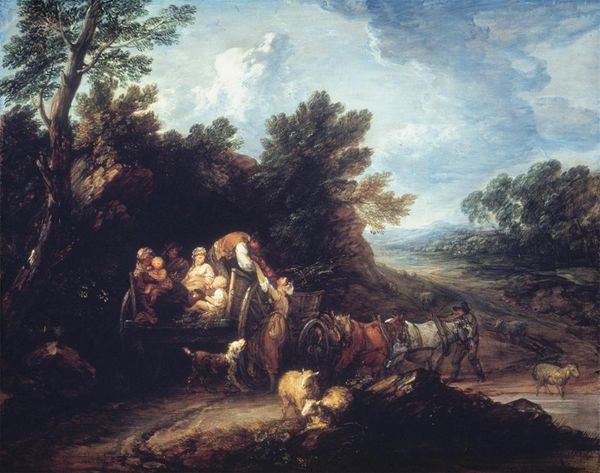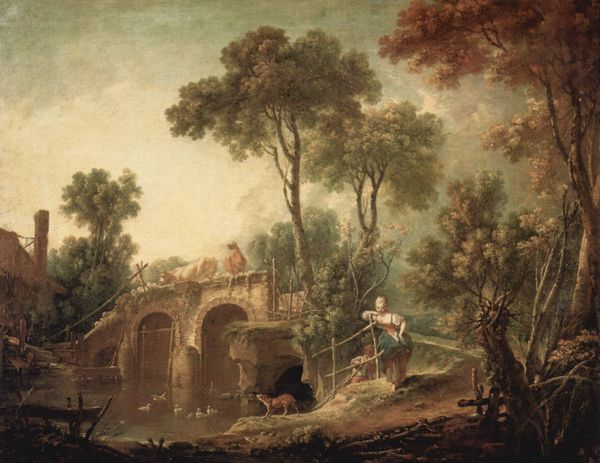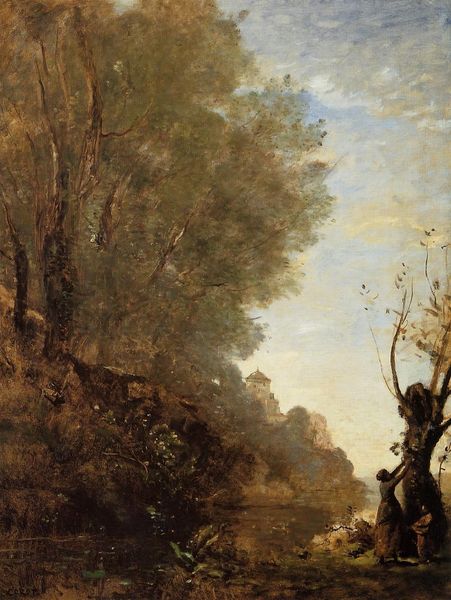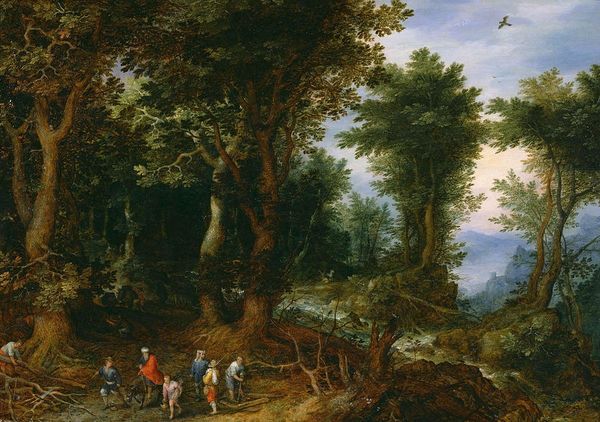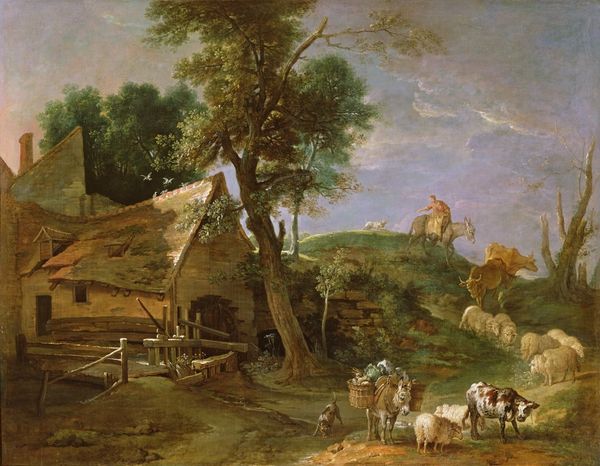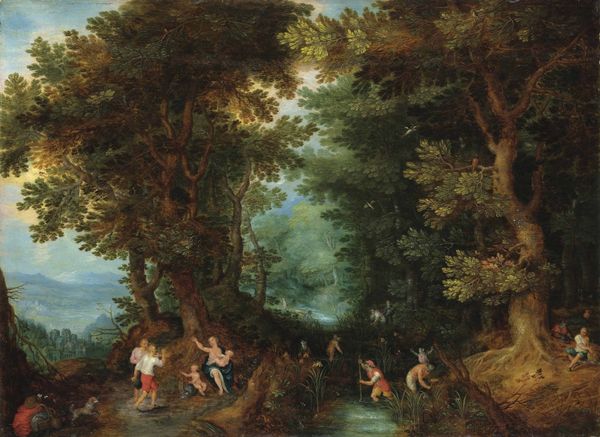
oil-paint
#
baroque
#
oil-paint
#
landscape
#
figuration
#
oil painting
#
genre-painting
Copyright: Public domain
Curator: What a beautifully composed painting. Paul Bril’s “Ruins and Figures,” painted around 1600 using oil paint, really arrests the eye. What are your first thoughts on this work? Editor: My first impression is one of warmth and diffusion, with the reddish-brown tonality that seems to unify the varied activities portrayed. Curator: Indeed. Bril, a Flemish artist working in Rome, reveals the burgeoning interest in landscape painting that would flourish in the Baroque era. This piece points to a growing market for paintings depicting pastoral scenes, meeting a demand from an increasingly wealthy class for imagery reflecting leisure and idealized nature. Editor: Observe how Bril skillfully organizes the picture plane. The diagonal placement of trees effectively draws the viewer’s gaze from the lively gathering in the foreground towards the ancient ruins positioned further back in space. This design integrates figures within their surroundings, adding to the picturesque atmosphere. Curator: Consider the materials employed here: oil paint allowed Bril to achieve those subtle gradations of light and shadow that suggest depth and imbue the scene with a certain dreaminess. Furthermore, the materiality extends beyond the paint; we should investigate who ground those pigments and stretched the canvas. Art production always entails extensive labor. Editor: Agreed. In addition, the hazy atmosphere contributes significantly. The subtle use of light helps soften the classical ruins in the distance. These atmospheric qualities combined with a classical framework result in a visually harmonious piece. Curator: I also think it’s essential to contextualize artworks such as this within the sociopolitical milieu of their making. Italy around 1600 was shaped by particular patrons, who consumed and deployed artworks within certain circles, constructing complex ideological meaning through their viewing habits. Editor: Yes, a useful approach. Ultimately, Bril presents a cohesive composition where architectural relics and figural representation exist within an environment that emphasizes their artistic presence through the harmonious interaction of form and space. Curator: By focusing on materials, labor, and context, one might further illuminate aspects previously unseen. Editor: An alternative route could concentrate upon exploring pictorial mechanisms themselves to unlock alternative visual meanings.
Comments
No comments
Be the first to comment and join the conversation on the ultimate creative platform.
